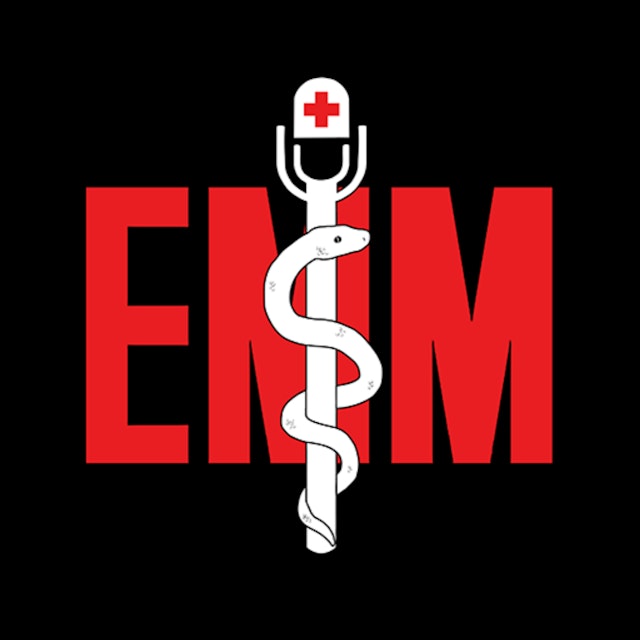Contributor: Kiersten Williams MD, Travis Barlock MD, Jeffrey Olson MS2
Summary:
In this episode, Dr. Travis Barlock and Jeffrey Olson meet in the studio to discuss a clip from Dr. Williams’ talk at the “Laboring Under Pressure, Managing Obstetric Emergencies in a Global Setting” event from May 2023. This event was hosted at the University of Denver and was organized with the help of Joe Parker as a fundraiser for the organization Health Outreach Latin America (HOLA).
Dr. Kiersten Williams completed her OBGYN residency at Bay State Medical Center and practices as an Obstetric Hospitalist at Presbyterian/St. Luke’s Medical Center in Denver, Colorado.
During her talk, Dr. Williams walks the audience through the common causes and treatments for post-partum hemorrhage (PPH).
Some important take-away points from this talk are:
-
The most common causes of PPH can be remembered by the 4 T’s. Tone (atony), Trauma, Tissue (retained placenta), and Thrombin (coagulopathies).
-
AV malformations of the uterus are probably underdiagnosed.
-
Quantitative blood loss is much more accurate than estimated blood loss (EBL).
-
The ideal fibrinogen for an obstetric patient about to deliver is above 400 mg/dl - under 200 is certain to cause bleeding.
-
Do not deliver oxytocin via IV push dose, it can cause significant hypotension.
-
Tranexamic Acid is available in both IV and PO and can be administered in the field. The dose is 1 gram and can be run over 10 minutes if administered via IV. It is best if used within 3 hours of delivery.
-
When performing a uterine massage, place one hand inside the vagina and one hand on the lower abdomen. Then rub the lower abdomen like mad.
-
A new option for treating PPH is called the JADA System which is slimmer than a Bakri Balloon and uses vacuum suction to help the uterus clamp down.*
-
Another option for a small uterus is to insert a 60 cc Foley catheter.
-
In an operating room, a B-Lynch suture can be put in place, uterine artery ligation can be performed, and as a last resort, a hysterectomy can be done.
*EMM is not sponsored by JADA system or the Bakri balloon.
References
-
Andrikopoulou M, D'Alton ME. Postpartum hemorrhage: early identification challenges. Semin Perinatol. 2019 Feb;43(1):11-17. doi: 10.1053/j.semperi.2018.11.003. Epub 2018 Nov 14. PMID: 30503400.
-
Committee on Practice Bulletins-Obstetrics. Practice Bulletin No. 183: Postpartum Hemorrhage. Obstet Gynecol. 2017 Oct;130(4):e168-e186. doi: 10.1097/AOG.0000000000002351. PMID: 28937571.
-
Federspiel JJ, Eke AC, Eppes CS. Postpartum hemorrhage protocols and benchmarks: improving care through standardization. Am J Obstet Gynecol MFM. 2023 Feb;5(2S):100740. doi: 10.1016/j.ajogmf.2022.100740. Epub 2022 Sep 2. PMID: 36058518; PMCID: PMC9941009.
-
Health Outreach for Latin America Foundation - HOLA Foundation. (n.d.). http://www.hola-foundation.org/
-
Kumaraswami S, Butwick A. Latest advances in postpartum hemorrhage management. Best Pract Res Clin Anaesthesiol. 2022 May;36(1):123-134. doi: 10.1016/j.bpa.2022.02.004. Epub 2022 Feb 24. PMID: 35659949.
-
Pacheco LD, Saade GR, Hankins GDV. Medical management of postpartum hemorrhage: An update. Semin Perinatol. 2019 Feb;43(1):22-26. doi: 10.1053/j.semperi.2018.11.005. Epub 2018 Nov 14. PMID: 30503399.
Produced by Jeffrey Olson, MS2 | Edited by Jeffrey Olson and Jorge Chalit, OMSII
The podcast Emergency Medical Minute is embedded on this page from an open RSS feed. All files, descriptions, artwork and other metadata from the RSS-feed is the property of the podcast owner and not affiliated with or validated by Podplay.
